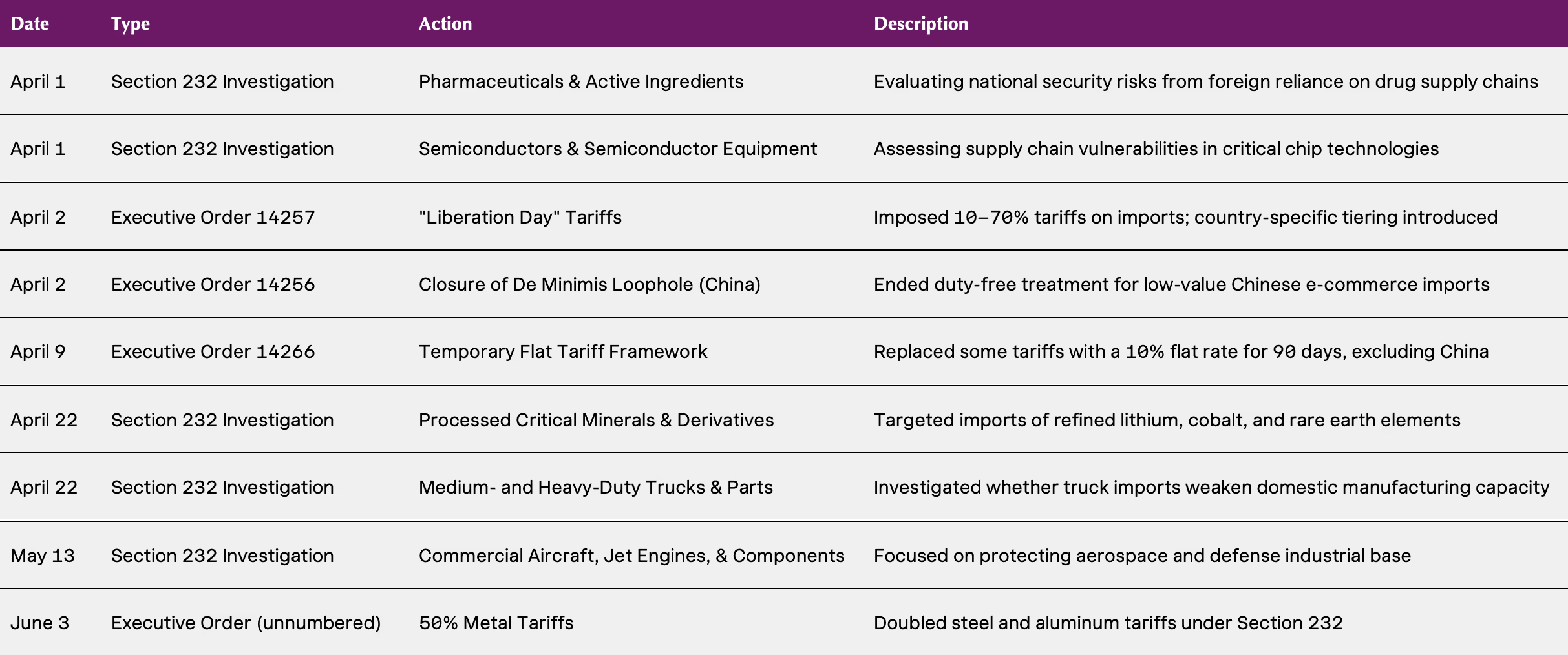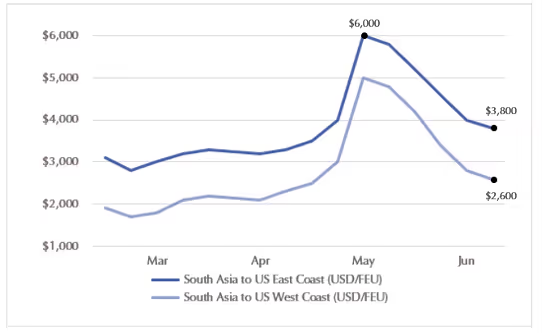
ZCGC Insights: Tariff Disruption: What Operators Are Doing Right
ZCGC Insights: Tariff Disruption: What Operators Are Doing Right
Executive Summary
The U.S. advanced its April 2nd “Liberation Day” tariffs, signaling more than a policy shift. This marked a structural change in how global trade, capital, and compliance are managed. It is no longer a temporary disruption. It is a lasting environment that challenges sourcing strategy, capital planning, organizational structure, and risk posture.
Leading firms are responding in real time. They are securing procurement terms, reassessing location strategies, deepening compliance, reviewing insurance and financial coverage exposure, and aligning financial planning with evolving trade risks. These are not isolated actions. They reflect a broader shift toward agile, integrated, and resilient operations.
Today, there is a distinct competitive advantage for those who have aligned their people and processes to respond quickly and decisively to future policy shifts.
Tariffs & Trade: Spotlight on Q2 Volatility
- A wave of new tariffs, delayed actions, and shifting investigations introduced extreme volatility, with no clear direction for operators to follow.
- Asia-to-U.S. shipping rates swung sharply as companies scrambled to time shipments around new tariffs, disrupting inventory and procurement strategies.
- Audits, classification reviews, and de minimis restrictions increased, forcing companies to strengthen internal controls and legal preparedness.
- Leading firms responded quickly, adjusting sourcing, logistics, compliance, and liquidity strategies to stay ahead of Q3’s continued volatility.
Q2 was defined by reversals. A planned tariff hike under IEEPA was delayed. New duties were added to steel, aluminum, and copper, with threats of 200 percent tariffs on pharmaceuticals. The result was volatility with no clear direction, making it harder for global firms to plan.
The Fed took a cautious stance. With trade uncertainty feeding into mixed inflation signals, the central bank held rates steady and signaled no urgency to move.
Q2 2025: Trade Actions Summary – Executive Orders & Investigations (1)

Q2 2025: SE Asia to US West Coast and East Coast Container Spot Rates
As trade policy shifted, supply chains were caught in the crossfire. In April, companies canceled shipments in anticipation of new tariffs, only to reverse course weeks later when those tariffs were paused. Container rates on Asia-to-U.S. routes surged, then fell just as quickly.
The volatility disrupted routing, inventory planning, and freight procurement, which left operators to make high-impact decisions with limited visibility.
Container Rates March – June ‘25 (2)

Navigating Volatility: What Leading Operators Are Doing Right
While many struggled to react, the most effective operators responded with clear strategy, speed, and cross-functional discipline. Across our portfolio, four themes define the edge:
- Proactive Diversified Procurement: Teams are expanding supplier networks and securing forward coverage to limit exposure to pricing shocks, trade actions, and sourcing delays.
- Working Capital Discipline: Inventory is being repositioned and right sized in sync with tariff timelines. Liquidity planning is tightly aligned with operations and cost forecasting.
- Compliance Readiness: Experienced trade professionals are helping firms stay ahead of shifting classifications, audits, and enforcement actions. Those investing in personnel are gaining both control and cost advantage.
- Strategic Logistics Contracts: Operators are rethinking contract terms to buffer against rate swings and warehouse constraints. Indexed and hybrid structures are replacing rigid deals to preserve both cost and service stability.
Looking Ahead to Q3: Volatility Persists
Volatility is expected to persist into Q3. Tariffs on copper, pharmaceuticals, and IEEPA-related goods are scheduled to take effect in August. Additional Section 232 investigations may introduce new duties on vehicles, aircraft parts, and critical minerals. Customs enforcement is also likely to intensify, particularly around transshipment and country-of-origin claims.
This environment will place growing strain on freight networks, widen inventory imbalances, and increase costs for import-reliant businesses.
The most effective operators are not waiting for clarity. They are acting early by aligning capital, contracts, and internal capabilities to stay ahead. In a landscape defined by rising tariffs, regulatory ambiguity, and transportation imbalances, the winners will be those who execute with speed, precision, and agility.
ZCGC Leadership

Sources
1 White House Presidential Actions (https://www.whitehouse.gov/presidential-actions)
2 Freightos Baltic Index (https://fbx.freightos.com)



